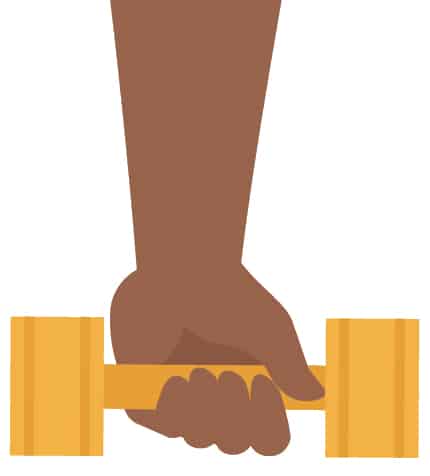
Here are a few ways you can turn back-to-school time into you time.
Create Your Agenda
Outline your day in blocks of time. If you have children going to school or engaging in virtual learning, how much time can you carve out of the school day for yourself while managing other responsibilities?
A good fitness routine can take as little as 20 minutes, and even be broken up into a couple of 10-minute sessions throughout the day. By starting with an outline of the set times, you can focus on fitness each day, and you’re taking the first step toward more complex and specific goals.
Don’t forget to give yourself credit for this critical first step—when you’ve completed your workout on Day One, use that as motivation to look at your schedule and lock down a time for Day Two. Taking advantage of a positive experience will help keep you on track.
Set Up Your “Classroom”
Now that you made a schedule, look for a place to dedicate to fitness. All you need are the basics—enough floor space to do body-weight exercises (like push-ups, sit-ups and planks), enough head room to jump from the floor level (for jumping jacks, burpees, and other plyometric moves), and a surface that you can move safely on (hardwood floors and sweat do not mix, and some carpeting can hinder effective movement).
With a laptop and an internet connection, you can access many free workouts online (YouTube has lots of options for all abilities), or just put on your headphones and make up your own routine to your favorite tunes. First goal? Just keep moving through the whole block of time.
Make a Lesson Plan

Once you’ve figured out where and when you can work out, it’s time to establish some milestones. If goal one was to simply get your heart rate up for a set duration of time, your next goal should be to add some specificity to that movement.
For example, you might determine that you’ll run in place for the first five minutes, then spend the next 10 minutes on body-weight exercises. You can set a goal for how many push-ups you’ll achieve in a period of time or how long you can hold a plank before resting, etc.
If you’re following a fitness program online, try to establish the path you’ll take from your starting point to your desired end point. Write your goals down in a clean notebook, where you can revisit previous goals, make notes on progress and plot your next steps over time.
Treat Yourself to New Gear
Are you motivated by seeing your goals written out? Then splurge on some fine-tip markers to color code a wall calendar and chart your path to success. Do you feel strong when you “look the part”? Treat yourself to a new pair of sneakers, or some sleek new workout clothes. Just like in the business world, dressing for the role you want can help you get there faster. Bonus: Much of the modern athletic wear is designed to easily transition from workout to workday, so you can seamlessly tackle your to-do list after exercising.
You Don’t Have to Sweat it to Get it
Making time for yourself isn’t just about finding ways to increase your physical fitness; it’s about mental fitness, too. It’s just as important to carve out time and space for relaxing, soul-searching activities as it is to raise your BPMs (beats per minute). If you can’t make time for both, alternate the time you do have between body and mind. Perhaps one week per month is devoted to spiritual wellness, while the rest of the time is spent on training and exercise. Find the right mix for you.
Define What Success Looks Like

In school we get feedback on how we’re performing—we pass a test, we get a grade, we complete an assignment. As you outline your agenda and prepare your space, think about what your gold star looks like in fitness (remember, everyone is different). Maybe it’s simply keeping your commitment to your allocated “you time.” Maybe it’s doing one new thing during every workout. The most important thing is to recognize (and reward) your commitment so you’re motivated to come back for more.



